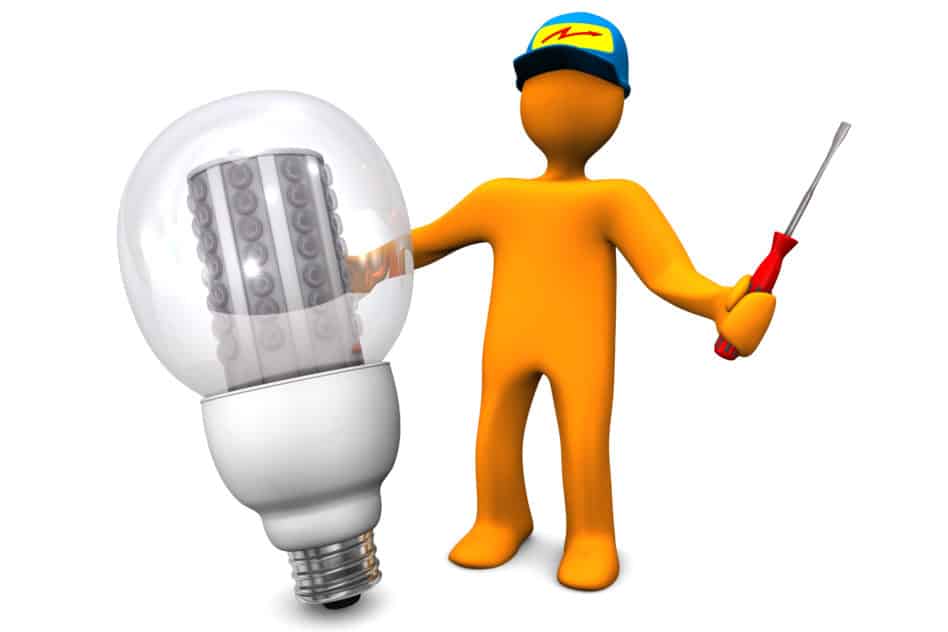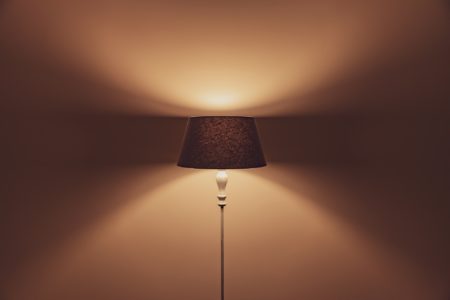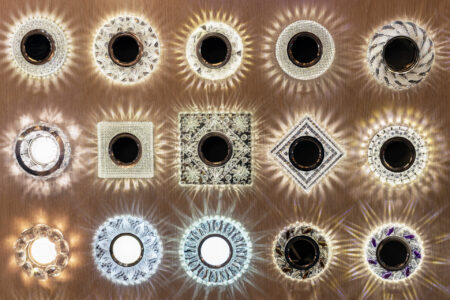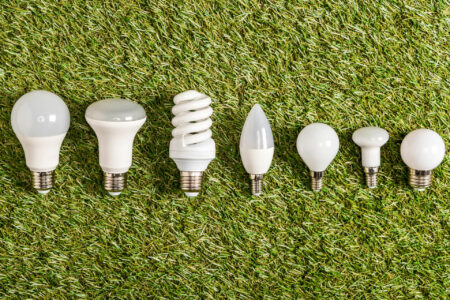Current LED lighting technique is very durable but sometimes even an LED lamp breaks down. This can happen after a short time or after several years. I am often asked by readers for advice why their LED light bulbs or the whole luminaire have failed. In this article I summarize the most frequent causes for defective LED lamps and how you can troubleshoot them.
LED lights do not work
Current LED light sources and luminaires are very durable and normally last between 15,000 and 50,000 hours. Nevertheless, LED lamps can also break down. On the one hand, this can be due to the lamp itself. Due to the relatively complex structure of an LED light, there are many sources of error. The LED itself rarely burns out. Defects occur much more frequently in the power unit or LED driver.
According to my own observations and the messages of many readers a certain trend can be recognized. According to that no-name LED lamps often break already after a short time rather than the lamps of brand manufacturers. One reason for this could be that the unknown manufacturers from the Far East use cheaper components and skip certain tests for light duration and switching resistance.
The error does not necessarily have to come from the LED lamp itself. Very often external factors are the cause. These include:
- Power fluctuations
- Faulty electrical installation
- Incompatible dimmer
- Unsuitable transformer for low voltage lamps
Frequent LED defects
I occasionally receive questions from readers why their LED light sources have broken down in this or that situation. Of course I can’t judge every defect from a distance. Some errors occurred however frequently, which are described in detail in the following sections. This way you can analyze your own LED defects more precisely and find out what’s wrong.
LED lamps faulty after a short time
Your LED lamps are constantly breaking down? You replace them and after a short time they are defective again? You should first check whether your LED lamps break down due to an external influence or burn out for no reason. In the second case you should check if you have used cheap no-name lamps so far. Then it is recommended to replace them with a lamp from a brand manufacturer.
- No-name lamp? – Try LED from brand manufacturer
- Operation with dimmer, transformer or motion detector? – Check out these steps
- Issues in electrical wiring? – Check out these steps
- Power fluctuations? – Check out these steps
LED ceiling light does not work
Your LED ceiling light no longer glows? You should first check whether the fuse for this circuit has tripped. If the ceiling light has already worked before, the lamp may be broken. Then you should check whether the light sources are replaceable. In this case you can replace the bulb with a new LED bulb with a suitable socket.
It can also happen that a newly installed LED ceiling light does not work. In this case you should check the wiring again and make sure that the lamp is connected correctly. If the ceiling light then still remains dark, it is usually due to the following external conditions.
- Ceiling light does not work? – Check fuse
- Light source defective? – Replace bulb or have it repaired
- New ceiling light does not work? – Check wiring
- New ceiling light on dimmer does not work? – Go to checklist
- New ceiling light on motion detector does not work? – Go to checklist
LED lamps go on and off
Your LED lights always go on and off? If the lamp has worked properly so far, it’s probably broken and needs to be replaced. If the error occurs with the newly installed LED lighting, the reason is usually one of the following conditions.
- Lamp has worked so far? – Lamp is faulty and must be replaced
- New lamp goes on and off? – Here you will find tips for flickering LEDs
- New lamp flashes? – Here you can find tips for flashing LEDs
Integrated LED defective
In many modern luminaires, the LED light sources are permanently installed. These cannot be changed by the consumer. In luminaires with a large number of integrated light-emitting diodes, a single defective LED is usually less severe and barely noticeable. For luminaires with only a few or even a single LED, a defect is a greater challenge.
- Only one of many LEDs defective? – No problem
- All/several LEDs defective? – This is what you can do in case of a defect of fixed LEDs
LED strip no longer works
If your LED strip doesn’t work anymore, it’s rarely the LED Stripe itself. LED Stripes have a variety of LEDs, which are all connected in parallel on most stripes. Even if individual LEDs fail here, this is hardly noticeable, because the majority of the LEDs still glow. Most LED strips have a controller with a remote control. This is usually the cause of a defect.
A broken LED strip usually doesn’t glow at all. On the one hand this can be due to the wiring. You should check the connection from the controller to the LED strip. Especially the connector between cable and LED strip has to be checked, because this connector is very sensitive. There must be a solid electrical connection to the contact surfaces of the strip.
If no error can be detected here, the most likely cause is the LED Stripe Controller. Most controllers are supplied via a plug-in power supply. To avoid a defect of the power supply, you may be able to use another power supply with the same voltage (usually 12V) for testing. If the LED strip is still dark, the controller is probably broken.
- Single LEDs remain dark? – No problem due to parallel connection
- LED strip remains dark? – Check connection between controller and Stripe
- Power supply defective? – Use another power supply with the same voltage for testing
- Controller defective? – Repair not possible for user/not worthwhile from a cost point of view
Troubleshooting guide
Above, the most frequent errors and defects were considered in connection with current LED lighting. In the following paragraphs you will find further instructions to find the exact cause for the mentioned errors.
Checklist for external faults
Operation on dimmer?
After switching old light sources to LED, problems with old dimmers often occur. If you want to operate your LEDs on a dimmer, both the dimmer and the LEDs must be marked as dimmable.
Operation on transformer?
After switching old light sources to LED, problems often occur with old halogen transformers. For a trouble-free operation you should use a suitable LED transformer.
Operation on motion detector?
After the conversion of old light sources to LED, problems with electronic motion detectors often occur. For trouble-free operation, you should use a suitable motion detector.
Checklist for electrical installation
Try the lamp in another place
If your LED light source does not work properly, you can remove it from the lamp and try it out in another lamp with the same socket. In the best case, this lamp should be connected to another circuit. If the light source works properly here, you have already limited the error to the original place of use and can further investigate there.
Permanently installed lights can also be connected to a different circuit if problems occur. Here the effort for disconnecting and connecting is naturally greater.
Power fluctuations
Power fluctuations can be caused by large electrical devices such as boilers or fan heaters. When these devices are switched on, strong voltage fluctuations occur, causing the light in the home to flicker briefly or certain appliances to switch off briefly. Fluctuations in current often occur in older or incorrectly dimensioned electrical installations.
On the other hand, power fluctuations can be caused by large industrial machines in the neighbourhood. If you find strong voltage fluctuations as a cause for your LED defects, you should definitely consult an electrician or the energy supplier.
Conclusion
There are many reasons for defective LED luminaires and broken LED lamps. In this article you got a good overview of common LED problems. The tips mentioned will help you to narrow down the faults and, in the best case, to solve them.






